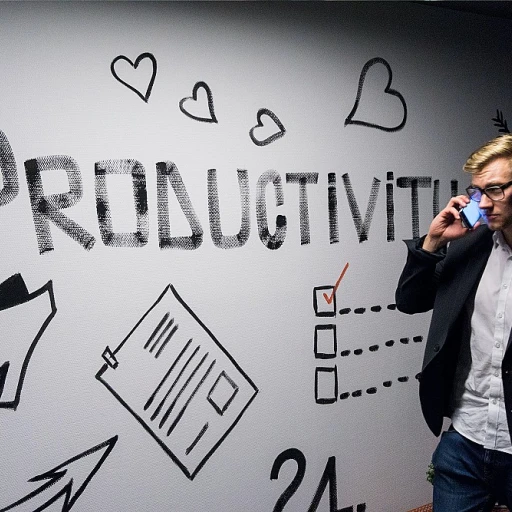
Understanding the value of diversity in mentoring
Why Diversity Matters in Mentoring Relationships
There is a growing recognition that diversity is not just a buzzword in the workplace. It is a core element that shapes how employees learn, grow, and lead. When companies invest in diversity and inclusion, they create environments where employees feel valued and heard. This is especially true in professional mentoring, where embracing diversity can transform both mentors and mentees.
In today’s workforce, diverse backgrounds—whether in terms of gender, race, religion, or culture—bring unique perspectives to the table. These differences are not obstacles; they are opportunities for richer learning and stronger company culture. Leaders who prioritize diversity inclusion in their mentoring programs often see improved problem solving and decision making, as diverse viewpoints challenge assumptions and spark innovation.
- Benefits of a diverse workforce: Studies show that companies with inclusive mentoring programs report higher employee engagement and retention (Harvard Business Review, 2021).
- Embracing diversity: When mentors and mentees come from different backgrounds, they learn to navigate unconscious bias and develop cultural competence.
- Commitment to diversity: Companies that offer diversity training and foster open dialogue help team members build trust and understanding across differences.
There was a time when many organizations overlooked the value of diversity workplace initiatives. Now, forward-thinking leaders recognize that inclusion is essential for effective mentoring. By embracing diversity, mentors and mentees can unlock new ways of thinking and working together. This commitment diversity is not just about compliance; it is about building a stronger, more resilient workforce.
For those looking to deepen their understanding of how diversity can empower their professional mentoring journey, exploring affirmations that support inclusive leadership can be a practical first step.
Facing initial discomfort and breaking biases
Challenging Comfort Zones and Recognizing Unconscious Bias
When I first started mentoring in a diverse workplace, I quickly realized that embracing diversity was more than a company value—it was a personal journey. There was a time when I felt uncertain about how to connect with employees from different backgrounds, whether it was about race, religion, gender, or even generational differences. This discomfort is common, especially in companies striving for a truly inclusive culture. Unconscious bias can quietly influence decision making and interactions, even among leaders who are committed to diversity inclusion. For example, I noticed that I sometimes gravitated toward mentees with similar experiences or viewpoints. It took honest self-reflection and open dialogue with team members to recognize these patterns. Diversity training and cultural competence workshops helped, but real growth came from asking questions and listening to diverse perspectives.- Embracing diversity means acknowledging our own biases and being willing to challenge them.
- Inclusive mentoring requires patience and a willingness to learn from discomfort.
- Companies benefit when employees feel safe to share their unique viewpoints and experiences.
Building trust across differences
Establishing Connections Beyond Surface Differences
Building trust in a diverse mentoring relationship is not always straightforward. When employees come from different backgrounds—whether it’s race, religion, gender, or cultural upbringing—there can be an initial sense of uncertainty. This is natural, especially in a workplace where diversity and inclusion are still evolving. The key is to recognize that trust takes time and intentional effort. One of the most effective ways to foster trust is through open dialogue. Leaders and mentors who create space for honest questions and active listening help team members feel valued. This approach encourages employees to share their experiences and perspectives, which is essential for an inclusive company culture. It’s not just about acknowledging differences, but about embracing diversity as a source of strength.- Commitment to diversity: Demonstrating a genuine commitment to diversity inclusion reassures mentees that their unique viewpoints are respected.
- Cultural competence: Engaging in diversity training and ongoing learning helps mentors understand the nuances of different cultures, which builds credibility and trust.
- Addressing unconscious bias: Leaders who admit to and work on their own biases set a tone of humility and growth, making it easier for employees to open up.
Learning from unique perspectives
Gaining Insight from Varied Experiences
When mentoring in a diverse workplace, one of the most powerful benefits is the exposure to a wide range of perspectives. Employees from different backgrounds—whether it’s culture, gender, race, religion, or even professional experience—bring unique viewpoints that can challenge assumptions and broaden understanding. This diversity is not just about representation; it’s about truly listening and learning from each other. Diverse viewpoints often lead to more creative problem solving. For example, when team members share how their previous companies approached a challenge, it can spark new ideas and encourage innovative solutions. Leaders who embrace diversity inclusion in mentoring relationships often find that their teams are better equipped to adapt to change and make more informed decisions.- Inclusive mentoring fosters open dialogue, where questions are encouraged and unconscious bias can be addressed.
- Employees feel valued when their perspectives are sought out, which strengthens company culture and commitment to diversity.
- Learning about different cultural norms and communication styles enhances cultural competence for both mentors and mentees.
Navigating challenges in diverse mentoring relationships
Overcoming Misunderstandings and Communication Barriers
When mentoring in a diverse workplace, misunderstandings can arise more often than expected. Employees from different backgrounds may interpret feedback, questions, or even body language differently. This is especially true in companies with a global workforce, where culture, race, religion, and gender all play a role in shaping communication styles. Leaders and mentors need to recognize that what seems clear to one person may be confusing or even offensive to another. Taking time to clarify intentions and encouraging open dialogue helps everyone feel included and valued.
Addressing Unconscious Bias and Stereotypes
Unconscious bias can quietly influence decision making and problem solving in mentoring relationships. Even well-meaning mentors and mentees may make assumptions based on someone’s background or appearance. Diversity training and ongoing self-reflection are essential for identifying and breaking these patterns. Companies committed to diversity inclusion often provide resources and training to help employees recognize their own biases. This commitment to diversity helps create a more inclusive company culture, where all team members feel respected and heard.
Balancing Individual Needs with Company Goals
Mentoring across diverse viewpoints sometimes means balancing the unique needs of employees with the broader goals of the company. For example, a mentor may need to adapt their approach to support a mentee’s cultural or religious practices, while still aligning with workplace expectations. This requires flexibility, empathy, and strong leadership skills. Inclusive leaders understand that embracing diversity is not just about representation, but about making sure everyone has the opportunity to contribute and grow within the company.
Building Cultural Competence Over Time
Developing cultural competence is an ongoing process. There will be times when even experienced mentors face challenges they haven’t encountered before. The key is to remain open to learning and to seek out diverse perspectives whenever possible. Asking thoughtful questions, listening actively, and being willing to adjust your approach are all part of building trust and inclusion. Over time, these efforts lead to a more resilient and innovative workforce, where employees feel empowered to share their ideas and experiences.
- Encourage open dialogue to address misunderstandings early
- Participate in diversity training to uncover and address unconscious bias
- Adapt mentoring approaches to support diverse needs and backgrounds
- Foster a company culture that values inclusion and continuous learning
Practical tips for mentors and mentees to embrace diversity
Encouraging Open Dialogue and Active Listening
One of the most effective ways to foster diversity and inclusion in mentoring is by creating space for open dialogue. Encourage both mentors and mentees to share their experiences and viewpoints, especially when they come from different backgrounds. Active listening, where each person genuinely tries to understand the other's perspective, helps build trust and respect. This approach not only makes employees feel valued but also strengthens the company culture.
Addressing Unconscious Bias
Unconscious bias can subtly influence decision making and interactions in the workplace. Mentors and mentees should be aware of their own biases and take steps to challenge them. Participating in diversity training or workshops on cultural competence can be a practical way to recognize and address these biases. Companies that invest in such training show a real commitment to diversity and inclusion, which benefits the entire workforce.
Setting Clear Expectations and Boundaries
When working with a diverse workforce, it’s important to set clear expectations and boundaries from the start. Discuss communication preferences, cultural norms, and any potential sensitivities related to race, religion, gender, or other aspects of identity. This helps prevent misunderstandings and ensures that everyone feels respected and included.
Leveraging Diverse Perspectives for Problem Solving
Encourage team members to bring their unique perspectives to the table. Diverse viewpoints can lead to more creative solutions and better problem solving. Mentors should actively seek input from mentees with different backgrounds, and mentees should feel empowered to share their ideas. This collaborative approach enhances decision making and drives innovation within the company.
Continuous Learning and Adaptation
Embracing diversity is not a one-time event but an ongoing process. Both mentors and mentees should commit to continuous learning about diversity, inclusion, and cultural competence. This might involve reading, attending workshops, or simply asking questions to better understand each other’s experiences. Over time, this commitment helps build a more inclusive and supportive workplace culture.
- Encourage regular feedback to improve the mentoring relationship
- Celebrate milestones and achievements that reflect diversity and inclusion
- Recognize the benefits of a diverse workforce in leadership and company growth












